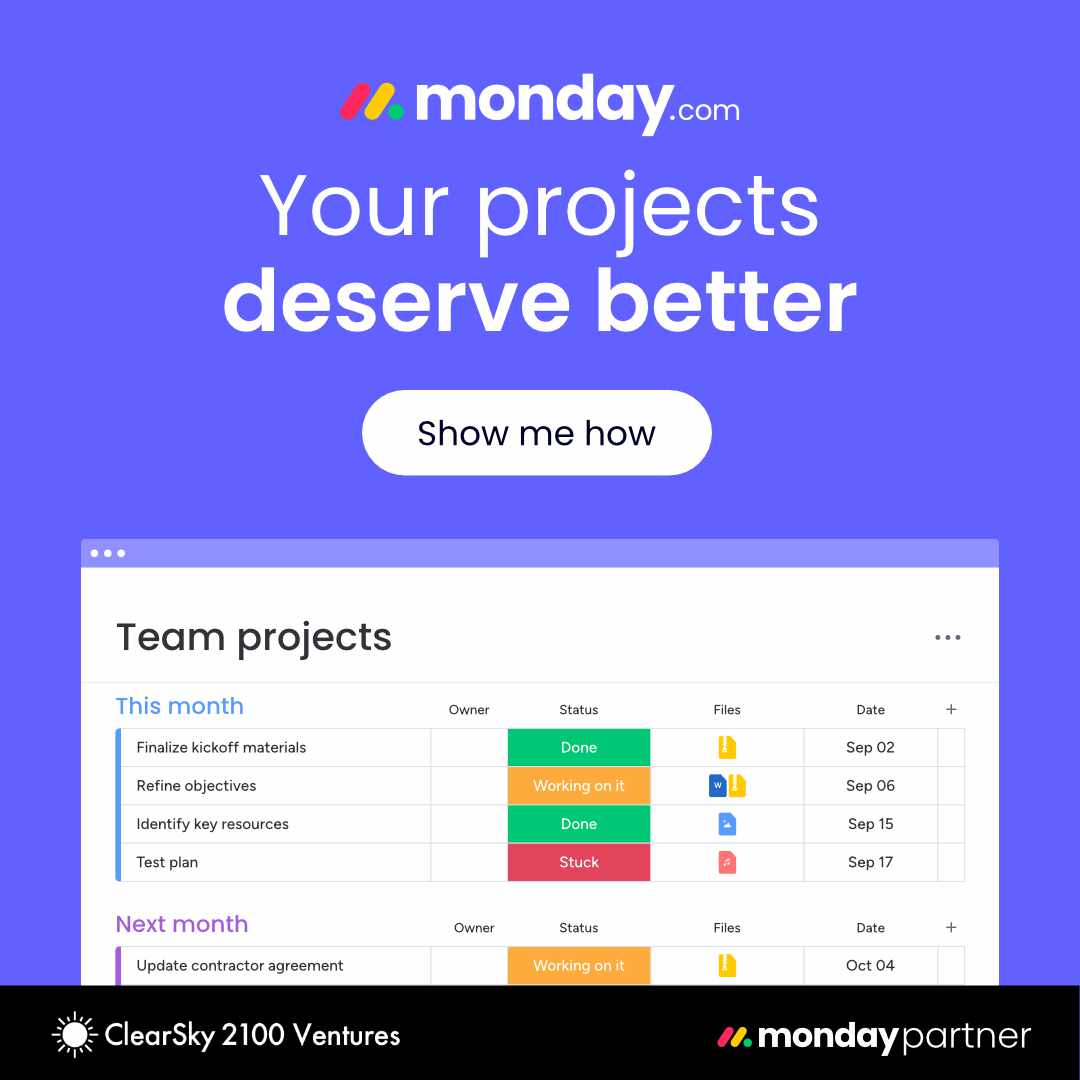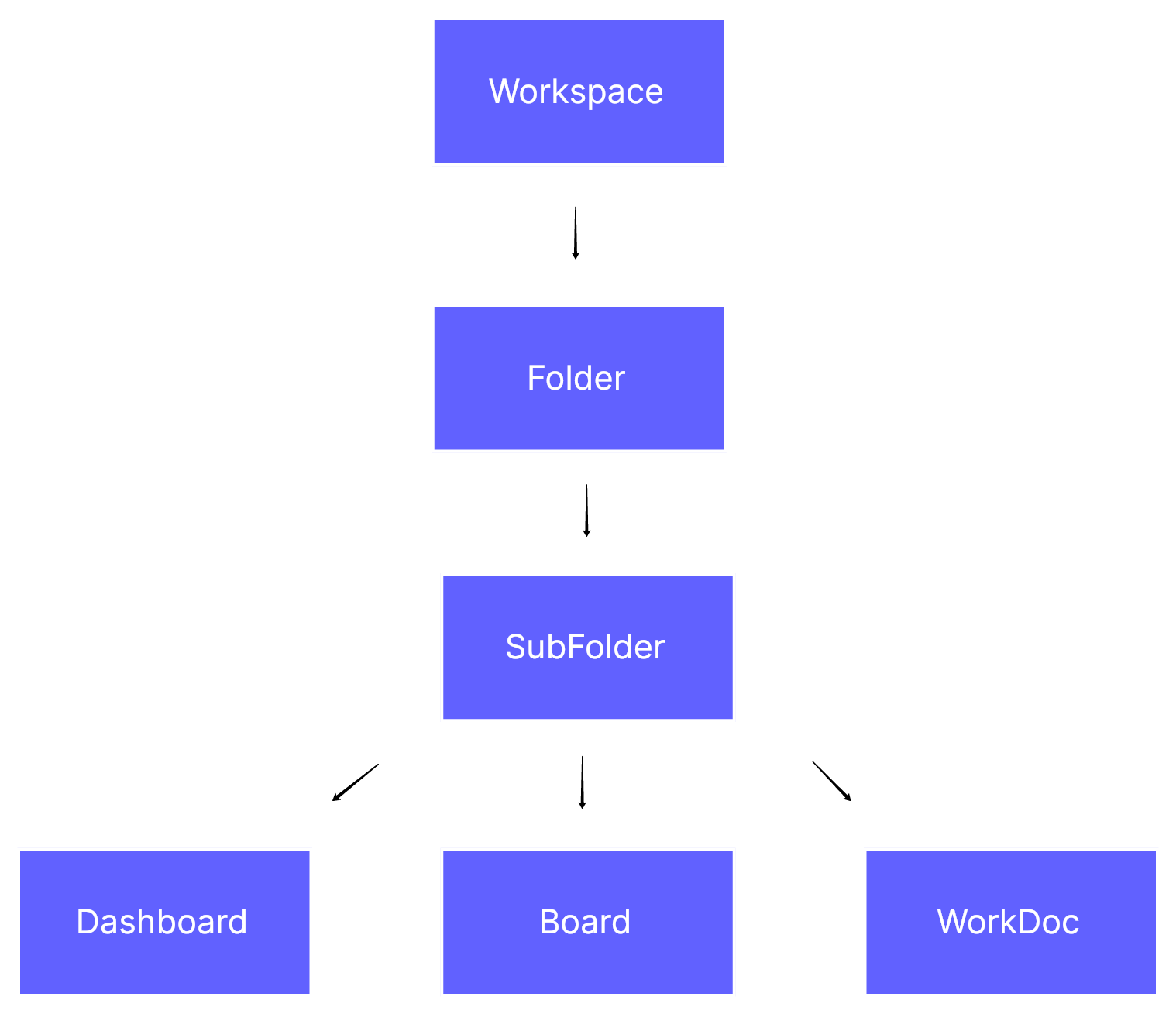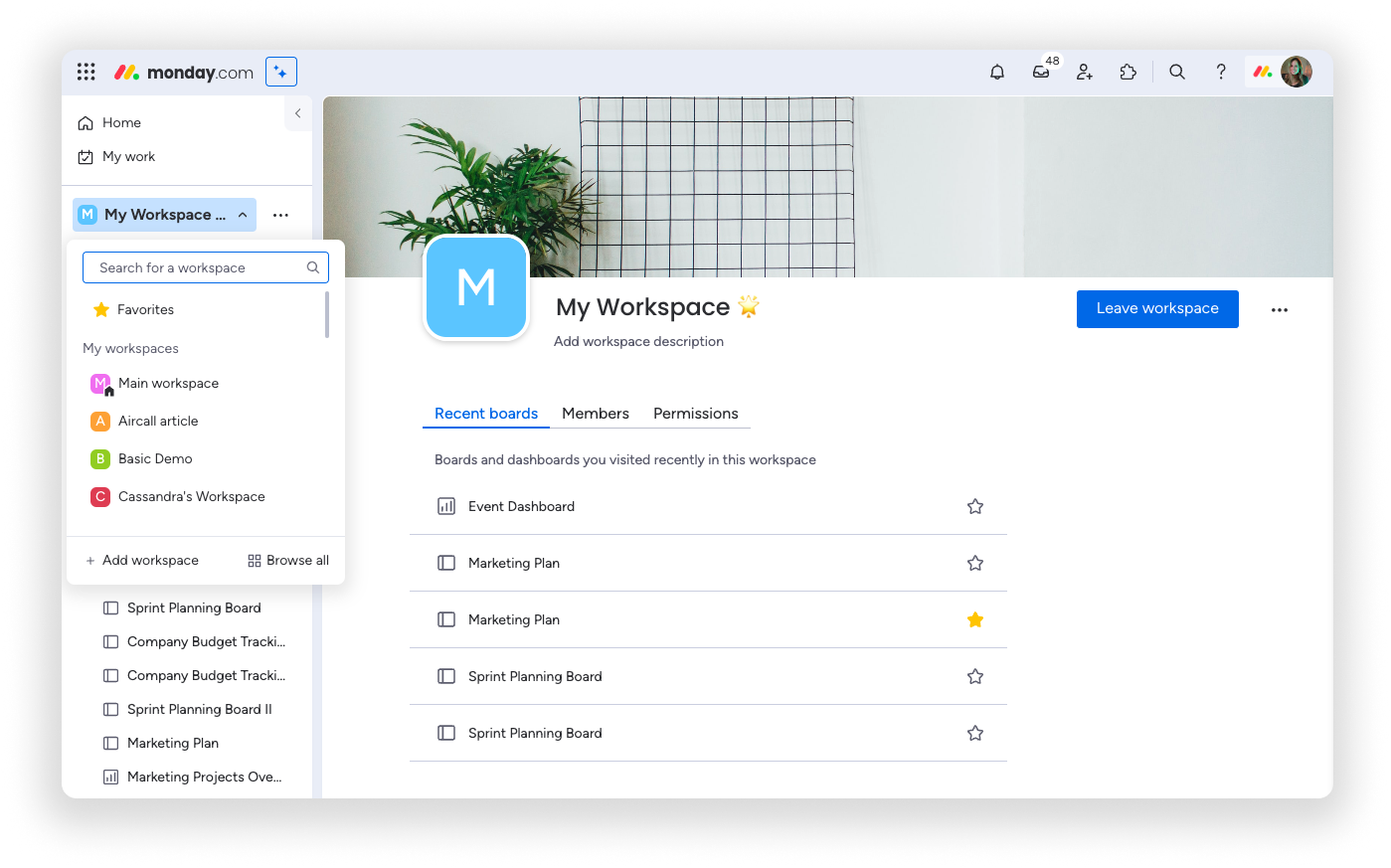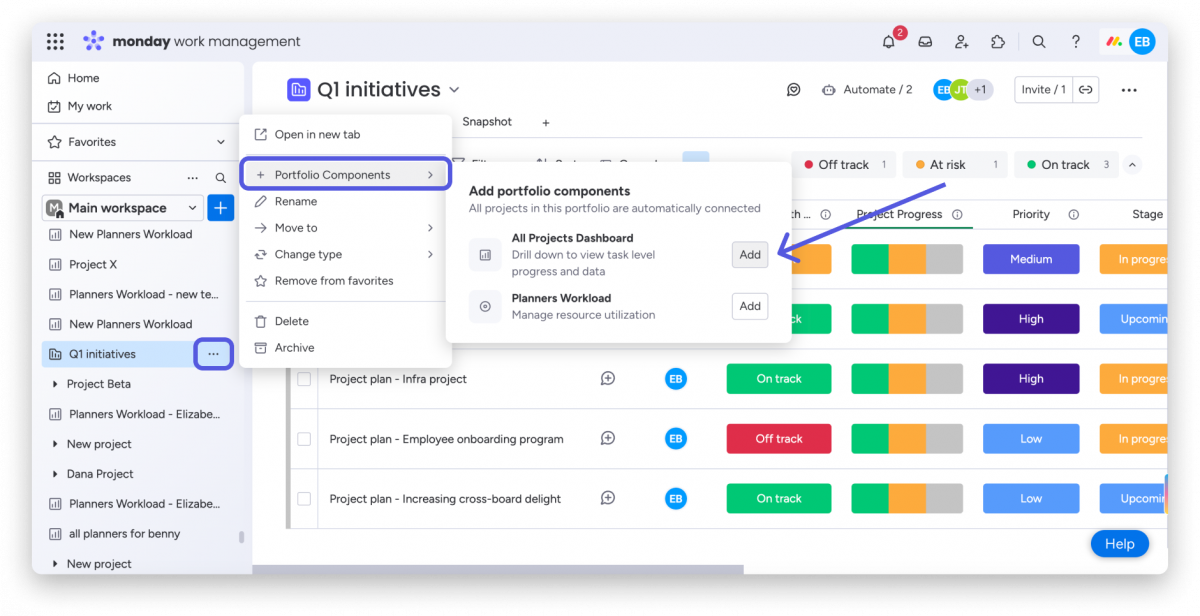Trade wars, rising conflict risk, labor market upheaval, and generational business risks have created a cloud of uncertainty threatening the survival of many businesses in the US and worldwide. Over the past decade, US business survival rates have varied significantly across industries. Data from the Bureau of Labor Statistics indicates that only 34.7% of businesses founded in 2013 were operational by 2023. Industries such as agriculture and forestry exhibited higher resilience, with over half of the companies surviving the ten-year mark. Conversely, mining, oil, and gas faced more challenges, with only about a quarter of businesses enduring over the same period. This disparity underscores the importance of industry-specific strategies to enhance business longevity. Certainly, the COVID-19 pandemic (2020-2022) impacted business survival over the 10-year period. However, 2025 brings a new set of conditions converging to create new threats to business survival. In an era of constant disruption, companies must be nimble and agile. Innovative workforce strategies and enterprise-wide workflow optimization are essential for business longevity.
This blog post discusses broader issues in the current business environment affecting business survival rates in poor-performing industries. We’ll also suggest how businesses can boost survival rates through innovative workflow automation. We’ll highlight leading work management player monday.com and its unique approach to workflow optimization to boost business survival rates. Be sure to follow us on LinkedIn. Let’s jump into it.
Disclosure: At ClearSky 2100 Ventures, our portfolio partly consists of affiliate partnerships. We may earn a small commission from buying links on our site at no cost to you.
A workflow is a system for managing repetitive processes and tasks that occur in a particular order. They are the mechanism by which people and enterprises accomplish their work, whether manufacturing a product, providing a service, processing information, or any other value-generating activity
Challenges in Business Survivability
Businesses across all industries face numerous challenges that can impact their longevity. Common issues include economic downturns, technological advancements, regulatory changes, and competitive pressures. Internal factors such as weak collaboration, inefficient processes, poor management, and lack of innovation can further risk a company’s survival. Consequently, addressing these challenges requires a proactive approach, streamlining operations, adopting new technologies, optimizing and automating business workflows, and fostering a culture of continuous improvement.
Understanding these factors is crucial for businesses that navigate uncertainties and ensure sustainability. In the current global economic environment, senior leadership across many industries lacks visibility over the near and medium term. However, it’s important to understand these key risks and their impact on their respective industries. The global economy is a complex ecosystem. Let’s dive into several key risks that businesses should consider as they plan over the next 12-18 months.
Geopolitical Risks
Geopolitical instability has emerged as a significant threat to business operations worldwide. Conflicts, political upheavals, and diplomatic tensions can disrupt markets, supply chains, and investor confidence. Over 110 armed conflicts are ongoing in various parts of the world. Ongoing conflicts in regions like Eastern Europe and the Middle East have disrupted global markets and supply chains. Political instability in various countries further exacerbates these challenges, making it difficult for businesses to operate smoothly. In particular, companies that rely on feedstock or inputs from high-conflict regions remain exposed and are constantly seeking to minimize these risks. In 2025, geopolitical risk on the North American continent is likely to increase as rhetoric escalates between once-friendly nations.
Trade Wars and Protectionism
In recent years, there has been a fierce debate on the issues of globalization versus economic fragmentation. At present, the economic fragmentation argument appears to be the winning geoeconomic model for the foreseeable future. A further rise in global tensions and the shift to a multipolar world ensure that economic fragmentation remains entrenched in the global order. We continue to witness the resurgence of protectionist policies that have led to new trade wars, notably between major economies. These conflicts have resulted in increased tariffs, import restrictions, and retaliatory measures, escalating costs for businesses and consumers. The evolving tariff policy of the US government and the trade tariff impact have presented businesses worldwide with challenges in planning and forecasting.
Economic Policies Under the Trump Administration
The second term of President Donald Trump has introduced transformative economic policy shifts, impacting both domestic and international business environments. This has been evident in US adjustments to global economic engagements, resulting in seismic shifts to the world order.

Implementation of Tariffs
In early 2025, President Trump signed executive orders imposing substantial tariffs: 25% on imports from Mexico and Canada (excluding Canadian oil and energy exports, which faced a 10% tariff) and an additional 10% on Chinese goods, supplementing existing tariffs of up to 25%. These measures, justified by the administration as necessary to address issues like illegal immigration and drug trafficking, have strained relations with these nations and disrupted established trade agreements. The Canadian government has retaliated with tariffs on target industries. Mexico’s response has remained more muted. The back-and-forth is indicative of the fluid situation, which we believe will be addressed during the upcoming renegotiation of the USMCA.
Mexico and Canada are signatories to the USMCA, one of the world’s largest trade blocs. Most (99%) of the trade between the bloc members enjoys zero tariffs with some carve-outs for agricultural products. The first joint review of the agreement will take place on July 1st, 2026.
Debt Management Strategies
Facing a national debt surpassing $36 trillion, the Trump administration has proposed unconventional debt management strategies, including compelling foreign governments to exchange U.S. Treasury bonds for less favorable alternatives, monetizing national assets, and reducing entitlement spending. The administration has also proposed a residency card program catering to UHNW individuals. These approaches have raised concerns among investors about potential impacts on U.S. creditworthiness and financial stability. Financial market analysts continue to raise concerns about USA AAA credit rating risks and the effect on global financial markets.
Domestic Economic Measures
Since taking office, the Trump administration’s economic policies have encompassed significant government workforce reductions, spending freezes, and regulatory rollbacks. The Department of Government Efficiency (DOGE) has been established with the primary goal of reducing a significant portion of the 2.3 million federal government workforce. Layoffs to date have been minimal. However, an expected surge in layoffs will likely occur in the coming months as workforce optimization hits Social Security, Veterans Affairs, and other large departments. Despite the intention to streamline government operations and stimulate economic growth, these measures have sparked debates about their potential to trigger a recession, as indicators such as consumer confidence and GDP expectations raise concerns.
Technological Disruptions
Rapid technological advancements present both opportunities and challenges for businesses. The rise of ChatGPT began an AI race that continues to transform businesses and the global workforce. While innovation can drive growth, it also necessitates continuous adaptation for business survival.
Cybersecurity Threats
As businesses increasingly rely on digital infrastructure, they become more vulnerable to cyberattacks. Data breaches and cyber threats can lead to significant financial losses and damage to reputation. In recent tests conducted by the Cybersecurity and Infrastructure Security Agency (CISA), across 80% of organizations, at least one employee fell victim to a phishing attempt. The global scam economy is broad, global, and growing. It consists of an interconnected web of fraudsters, hackers, and cybercriminals who manipulate technology to exploit businesses and individuals. Digital fraud is no longer limited to isolated incidents but has become a structured, professionalized industry. Criminal networks operate on a large scale, developing sophisticated tools and techniques that bypass traditional security measures.
Automation and Job Displacement
The rise of automation and artificial intelligence has transformed industries but also led to concerns about job displacement. It is expected that over 300 million jobs worldwide will be affected as AI becomes more ubiquitous. The rise of Agentic AI and the goal of Artificial General Intelligence will result in accelerating job displacement as many jobs are automated. While this will be a boon for businesses, corporate leadership must balance technological integration with workforce considerations. In the workplace, AI adoption remains scattered across generations. For example, 85% of Generation X use their own AI tools at work, with much lower adoption rates by BabyBoomers

Climate Change
Rapid urbanization and megacity growth in emerging societies are creating new and complex climate and environmental challenges for businesses worldwide. By 2050, roughly 68% of the world’s population will inhabit cities. Climate change poses risks to nearly every industry. Challenges in food security, water security, and waste management continue to test governments’ ability to craft effective policies that address the downside while promoting sustainable growth. Businesses are increasingly pressured to adopt sustainable practices to mitigate environmental impact. Environmental issues and health crises will have profound implications for business operations.
Supply Chain Vulnerabilities
Various disruptions have tested global supply chains, highlighting their fragility. Once well-integrated supply chains, e.g., North American automotive, are now under threat as trade wars and policy shifts loom. Supply chain de-risking strategies such as friendshoring and nearshoring are no longer safe bets. This global uncertainty and supply chain shift continue to impact competitiveness, threatening the survival of many small and medium-sized businesses.
Sole-Source Risk
Reliance on single suppliers or regions for critical components is leading to significant operational risks. Pharmaceuticals, agriculture, and medical equipment industries remain most susceptible to sole source risk. Diversifying supply sources is essential for mitigating these vulnerabilities.
Transportation and Logistics Challenges
Recent events such as the COVID-19 pandemic or geopolitical tensions can disrupt transportation networks, leading to delays and increased costs. Recent attacks on shipping lanes in the Red Sea have increased both costs and time for businesses. For example, rerouting through the Cape of Good Hope adds 12-14 days of extra transit time. Similarly, container rates have risen threefold. Companies must develop flexible logistics strategies to navigate these challenges.
Financial Market Volatility
Economic uncertainties continue to contribute to financial market volatility, affecting investment and access to capital. Lingering uncertainty from the tariff threats will continue to affect company earnings as consumer demand softens. Financial markets, e.g., the S&P 500, DJIA, and NASDAQ, are witnessing higher levels of market volatility entering correction (10% from highs) territory. We expect this volatility to continue as uncertainty remains.
Currency Fluctuations
For those businesses engaged in international trade, exchange rate volatility can impact profitability. In 2025, US economic policy, high US debt levels, and emerging threats from BRICS and EU political repositioning are key issues to monitor throughout the year. Additionally, recession risks will weigh on currency levels. Nevertheless, we think the US dollar will remain the world’s reserve currency for the foreseeable future. However, effective hedging strategies are vital to managing these risks.
Interest Rate Changes
The Atlanta Fed’s recent downward GDP revision and weakening February consumer confidence to its lowest level since 2022 will likely weigh on interest rates in 2025. Economists expect the US Federal Reserve to hold rates steady in its upcoming March 18, 2025, meeting. However, projections indicate a 1 bps reduction, with the first decrease expected in June. Factors like economic data and rapidly evolving global events will heavily influence final decisions. For companies, these shifts in interest rates will influence borrowing costs and investment decisions. Businesses must monitor monetary policies to anticipate and respond to these changes effectively.
Social and Demographic Changes
Evolving social dynamics and demographic trends will present both opportunities and challenges for businesses. The global population continues to age. By 2050, people 65 years old and over will account for 16% of the world’s population, or 2.1 billion.
Aging Populations
Across many developed countries, aging populations will affect labor markets and consumer demand. By 2040, the US population 65 and older will account for 23% of the total population. Businesses may need to adjust their strategies to cater to older demographics as consumers and laborers. For example, those 75 and older form the fastest-growing segment of the US workforce.
Changing Consumer Preferences
The birth of Generation Beta, the aging of GenX and Millennials, and the rise in the global elderly will create broad shifts in consumer preferences. Additionally, middle-class growth will accelerate in emerging markets. Key consumer trends to watch include:
- Evolving brand loyalty
- Sustainability
- Wellness
- Social commerce
The ability for companies to capture market share and grow and thrive will depend on their agility and adaptability in the wake of these evolving consumer trends.
Regulatory and Compliance Pressures
Navigating complex regulatory environments requires businesses to stay informed and agile. The rollback of key US regulatory frameworks in data protection and environmental regulation may provide a respite for businesses. However, political volatility remains, suggesting uncertainty in the years ahead.
Data Protection Laws
With the rise of digital data, regulations like the General Data Protection Regulation (GDPR) impose strict requirements on businesses to protect consumer information. The ubiquity of social media, online scams, and rancorous political discourse continues to present data protection concerns for consumers and platforms. Robust solutions
Environmental Regulations
Stricter environmental laws necessitate that businesses adopt sustainable practices, impacting operations and profitability. In the United States, the new Trump administration has moved to roll back regulatory frameworks related to water, clean air, oil and gas drilling, protected lands, climate, etc. The shift in approach toward regulation may provide benefits for businesses. Longer-term operating uncertainty persists as administrations transition and regulations are revisited.

Industries with Lower Survivability Rates
Analyzing data from the U.S. Bureau of Labor Statistics reveals that specific industries experienced notably lower ten-year survival rates for establishments established in 2013. Businesses in open markets constantly face pressures on multiple fronts, including industry-wide competition, workforce challenges, technology disruption, etc. Overall, only one-third of all businesses created in 2013 have served for a decade. Among these sectors are Mining, Quarrying, and Oil and Gas Extraction (24.5%), Arts, Entertainment, and Recreation (28.0%), Information (29.1%), Transportation and Warehousing (30.5%), and Healthcare and Social Assistance (31.1%). Each industry encounters unique operational hurdles contributing to their comparatively low longevity, emphasizing the need for targeted strategies to boost business survival and resilience.
Mining, Quarrying, and Oil and Gas Extraction (24.5%)
Industry Overview
The mining, quarrying, and oil and gas extraction industry encompasses activities related to extracting natural resources like minerals, oil, and gas. It’s capital-intensive and heavily influenced by global economic trends, commodity prices, and environmental regulations. The US mining sector generated $702 billion of gross output and employed over 500,000. Similarly, the market size of the US oil and gas industry was roughly $500 billion, and it employed 10.3 million. Mining and oil and gas remain susceptible to commodity prices, with recent waves of credit defaults and bankruptcies occurring in 2009 and 2016.
Challenges Affecting Survivability
- Commodity Price Volatility: Drastic price fluctuations can significantly affect profitability and financial stability.
- Regulatory Compliance: Strict environmental and safety regulations increase operational complexities and costs.
- Operational Risks: High capital expenditures and potential equipment failures create financial vulnerabilities.
Arts, Entertainment, and Recreation (28.0%)
Industry Overview
This industry includes performing arts companies, museums, amusement parks, fitness centers, and recreational facilities. It relies heavily on discretionary consumer spending and is highly sensitive to economic fluctuations and consumer trends. The COVID-19 pandemic negatively impacted many of these businesses. Recovery post-pandemic for many of these industries has been strong, in line with subsequent economic growth and an uptick in discretionary spending. However, certain segments, such as museums and the performing arts, will continue to face operating pressures in the wake of declining attendance, funding cuts, and shifting consumer preferences.
Challenges Affecting Survivability
- Economic Sensitivity: Economic downturns lead consumers to reduce discretionary spending, directly impacting revenue.
- Seasonal Demand: Many businesses experience significant fluctuations in income due to seasonal customer preferences.
- Competition and Digital Disruption: Increased competition, particularly from digital entertainment platforms, pressures traditional venues to innovate continuously.

Information Industry (29.1%)
Industry Overview
This sector comprises businesses involved in publishing, broadcasting, telecommunications, data processing, and hosting services. Rapid technological advancements heavily influence market dynamics. Industries such as publishing, particularly print, continue to face intense competition from digital services. Additionally, the rise of streaming services has impacted traditional broadcasting companies.
Challenges Affecting Survivability
- Rapid Technological Changes: Continuous technological advancements necessitate regular updates and innovation, making it difficult for businesses to remain relevant.
- Intellectual Property Protection: High vulnerability to copyright infringement and piracy can significantly impact revenues.
- Competition from Digital Platforms: The emergence and rapid growth of digital media channels fragment audiences and intensify competition.
Transportation and Warehousing (30.5%)
Industry Overview
Businesses in transportation and warehousing include logistics providers, trucking companies, air freight services, and storage facilities. Efficient operations are critical, with profitability closely linked to economic activity and supply chain performance. According to analysts, the freight and logistics market will reach $1.67 trillion by 2030. Additionally, the transportation and warehousing industry employed 6.6 million.
Challenges Affecting Survivability
- Fuel Cost Volatility: Fluctuating fuel prices significantly impact operational costs and margins.
- Supply Chain Disruptions: Disruptions from geopolitical conflicts, pandemics, or infrastructure issues can severely affect service reliability.
- Regulatory Compliance: Stringent regulations regarding safety, emissions, and labor significantly influence operations and profitability.
Healthcare and Social Assistance (31.1%)
Industry Overview
This industry encompasses medical facilities, hospitals, nursing homes, outpatient care providers, and social service agencies. Businesses rely on steady demand driven by demographic trends but face significant regulatory oversight and operational complexity. In the United States, a rapidly aging population as well as recruitment and turnover challenges are contributing to the $11 trillion global care economy workforce crisis.
Challenges Affecting Survivability
- High Operational Costs: Rising healthcare delivery costs and stringent regulatory environments increase financial pressures.
- Workforce Shortages: Difficulty recruiting and retaining qualified professionals often leads to operational inefficiencies.
- Regulatory Complexity: Compliance with evolving healthcare laws and regulations requires significant administrative resources, impacting profitability.
Building Innovative Workflow Strategies
Business survival depends, in large part, on multiple factors aligning to create long-term growth. Factors vary and include management teams, market demand, operational efficiency, etc. Whether SMEs or Fortune 500, understanding workflows and optimizing workflows are foundational to business success.
What Are Workflows?
A workflow is a system for managing repetitive processes and tasks occurring in a particular order. They are the mechanisms by which people and enterprises accomplish their work, whether manufacturing a product, providing a service, processing information, or performing any other value-generating activity. Workflows help teams know precisely what needs to be done, by whom, and in what order. This clarity makes work smoother and more efficient, reducing errors and helping teams stay aligned.
Why is Optimizing Workflows Important?
Companies unwilling or unable to optimize workflows face the following downside business risks.
Increased Costs and Reduced Profitability
- Wasted Time and Resources: This includes wasted employee time, materials, and other resources
- Higher Labor Costs: Tasks that take longer than necessary due to poor workflows inflate labor costs, eating into profit margins.
- Errors and Rework: Poorly defined processes can lead to more errors, requiring rework and additional resources to fix mistakes. This increases costs, project delays, or damages business reputation.
Reduced Productivity and Output
- Bottlenecks and Delays: Unoptimized workflows often create bottlenecks where tasks get stuck, slowing down processes and reducing overall output.
- Lack of Clarity and Accountability: A lack of clarity within a workflow can lead to confusion, delays, and missed tasks.
- Disengaged Employees: Inefficient workflows can lead to less collaboration and reduced employee morale and engagement, resulting in lower productivity.
Decreased Customer Satisfaction
- Longer Lead Times: Inefficient workflows often result in longer delivery times for products or services, impacting customer service.
- Errors and Mistakes: Poor quality resulting from unoptimized processes can lead to dissatisfied customers and potential loss of business.
- Poor Communication and Service: Inefficient internal processes can translate to poor customer success, damaging business reputation.
Missed Opportunities and Lack of Innovation
- Focus on Fixing Problems: When resources are constantly tied up dealing with the consequences of poor workflows, teams have less time and energy to focus on innovation and exploring new opportunities.
- Inability to Adapt Quickly: Inefficient processes can make it difficult for a business to adapt quickly to changing market conditions or changing customer needs.
Poor workflow optimization can negatively impact business survival rates. It reduces profitability and productivity, ultimately weakening competitive advantage and business survivability in the long run. Conversely, companies that prioritize workflow optimization are much better positioned for efficiency, growth, and long-term success.
How to Approach Workflow Design
Effective strategies for optimizing workflow are crucial for business success. It involves a systematic approach to mapping out and optimizing processes, ensuring tasks flow smoothly and efficiently. A fundamental step in this process is asking the right questions. These questions should probe existing pain points, identify bottlenecks, and clarify desired outcomes. Understanding the “why” behind each step and the “who” involved is essential for designing a truly impactful strategy. These activities do require a collaborative approach, and teams should be aligned in common goals.
Workflow design aims to achieve several key goals. As businesses consider workflow design, focus on the three Cs:
- Consolidation: Involves streamlining information flow, centralizing data, and organizing tasks logically to eliminate redundancy and improve accessibility
- Collaboration: Defining clear roles, responsibilities, and communication channels, enabling seamless teamwork and knowledge sharing.
- Continuity: Documenting processes, establishing backup plans, and creating resilient workflows that can withstand disruptions, safeguarding business operations and long-term survival.
By thoughtfully designing workflows with these goals in mind, businesses can enhance efficiency, reduce errors, compete effectively, and improve profitability.
Introduction to monday.com
monday.com is a cloud-based Work Operating System (WorkOS) that empowers organizations to enhance productivity through streamlined workflows and seamless team collaboration. The platform offers customizable solutions that enable businesses to manage complex tasks efficiently, automate routine processes, and gain valuable insights through robust analytics and integrations with widely used third-party applications. monday.com also allows companies to consolidate their tech stack, saving costs. Additionally, to meet diverse organizational needs, monday.com provides specialized products, including Monday Work Management, Monday CRM, Monday Dev, Monday Service, and Monday WorkCanvas.
monday.com is present in over 200 countries across 200 industries with a customer base exceeding 225,000 customers.
Companies with between 200 and 749 employees use, on average, over 100 SaaS apps.
Overview of monday.com’s WorkOS
monday.com’s WorkOS is designed to be a flexible and scalable solution for managing workflows. The workflow system is based on a unique structural hierarchy. Key features include:
- Customizable Templates: Users can tailor templates to fit specific industry needs, facilitating quick setup and standardization.
- Automations: Automate repetitive tasks to reduce manual errors and save time through pre-made and custom templates.
- Integrations: Seamlessly connect with over 200 tools, including CRM systems, marketing platforms, productivity suites, and communication apps.
- Real-Time Collaboration: Facilitate communication among team members through updates, comments, and file sharing within the platform.
- Advanced Reporting: Generate insights with customizable dashboards and reports to monitor performance and make informed decisions.
monday.com Structural Hierarchy
Monday Work Management
monday.com Work Management is designed to simplify and centralize project and task management. It offers customizable boards, timelines, and dashboards, enabling teams to plan, track, and deliver projects with clarity and accountability. It includes key building blocks, including Columns (Data display), Tasks (Activities), Items (Data Tracking), Sub-Items, etc. Automation capabilities eliminate repetitive tasks, facilitating better time management and enhancing overall productivity. Monday.com’s structural hierarchy includes the following components:
- Workspaces: The monday.com workspace is the central hub of the WorkOS, consolidating all of the workflow-related information such as folders, boards, dashboards, etc. Workspaces can be organized around departments, e.g., finance, R&D, HR, marketing, etc.; teams; or projects.
- Folders: Folders provide an additional layer of detail and structure to ensure efficient management for teams.
- SubFolders: Extends the functionality of folders to further organize information and optimize workflows
- Dashboards: Provide a visualization of aggregated data, offering insights for better decision-making. Dashboards are highly customizable and relevant to the workflows at hand.
- Board: Boards are where the workflows happen, allowing users to track and manage everything from simple tasks to large projects.
- WorkDoc: Multimedia whiteboard for capturing notes and ideas on a central topic. Workdoc functions as stand-alone documents integrated within a column linking to specific tasks.
The monday.com work management product forms the key pillar of the WorkOS model. However, other options exist to bring even more efficiency to the enterprise. Other best-in-class products include:
- Monday CRM: Monday CRM streamlines customer relationship management by providing a comprehensive view of sales pipelines, customer interactions, and team activities. The platform allows teams to manage leads, automate sales processes, and gain real-time insights into sales performance, helping businesses build stronger customer relationships and increase revenue.
- Monday Dev: Monday Dev is tailored specifically for software development teams. It supports agile methodologies, bug tracking, feature prioritization, and roadmap planning. Integrated automation features accelerate product releases and improve software quality by fostering better collaboration between developers, product managers, and QA specialists.
- Monday Service: Monday Service is a robust customer service management solution that helps businesses efficiently manage support requests, enhance customer satisfaction, and streamline communication. It centralizes customer interactions, automates service workflows, and provides valuable analytics, enabling support teams to resolve issues promptly and proactively.
- Monday WorkCanvas: Monday WorkCanvas is a visual collaboration tool designed for strategic planning, brainstorming, and ideation. Its intuitive interface allows teams to collaborate visually in real-time, capture creative ideas, and organize workflows dynamically. WorkCanvas fosters innovation and enhances decision-making by enabling teams to visualize complex concepts clearly and effectively.
Improving Workflows in Low-Survivability Sectors with monday.com
Implementing monday.com’s unique workflow models can address specific challenges in industries facing lower survivability rates. Companies in any given industry will be affected by macro factors, e.g., commodity prices, regulations, etc. However, external and internal pain points often differ in severity. The ability of any company to withstand industry headwinds is, in part, a function of organizational efficiency, data insights, and workflow optimization. Let’s look at some examples of how monday.com can help businesses in challenging industries survive and thrive.
Mining, Oil, and Gas Industry
Enhancing Operational Efficiency
By utilizing monday.com’s customizable templates, companies can standardize processes such as exploration, extraction, and compliance reporting. Automations can set conditions and triggers to schedule regular equipment maintenance, reducing downtime and possibly extending machinery lifespan.
Managing Regulatory Compliance
monday.com’s integrations with compliance management tools enable real-time monitoring of regulatory requirements. Automated alerts notify teams of upcoming audits or policy changes, ensuring timely adherence to regulations and reducing compliance risks and possible fines.
Facilitating Remote Collaboration
Given the global operations typical in this industry, monday.com’s real-time collaboration capabilities ensure seamless communication across dispersed teams, reducing delays and enhancing decision-making efficiency.

Information Industry
Streamlining Content Production
monday.com simplifies content management workflows through automated task assignments, deadline tracking, and resource allocation. Customizable dashboards provide real-time visibility into project progress, helping teams avoid bottlenecks and maintain productivity.
Strengthening IP Management
monday.com’s integrated document management and automated approval workflows streamline intellectual property management. Teams can efficiently track IP filings, renewals, and compliance obligations, significantly reducing IP infringement and loss risks.
Facilitating Technological Agility
By leveraging monday.com’s integrations with technology tools, businesses in the information industry can quickly adapt to market disruptions. Automation features enable rapid deployment of new workflows, ensuring companies remain competitive amidst technological change.
Arts, Entertainment, and Recreation
Streamlining Event and Facility Management
monday.com’s customizable boards and templates allow businesses to efficiently plan and coordinate events, manage bookings, and track facility utilization in real-time. Automations simplify scheduling and task assignment, minimizing errors and maximizing resource efficiency, which is especially crucial during peak seasons.
Strengthening Financial Visibility
Using monday.com’s integrated reporting tools, organizations gain clearer visibility into budgeting, ticket sales, and attendance analytics. Detailed dashboards facilitate strategic financial planning and enhance responsiveness to market fluctuations, improving overall financial stability.
Enhancing Customer Engagement
Automated CRM workflows empower businesses to maintain consistent communication, promote events, and respond promptly to customer inquiries. This capability fosters stronger customer loyalty, enhances brand reputation, and supports sustainable revenue growth.
Transportation and Warehousing
Optimizing Logistics and Inventory Management
monday.com’s automation and real-time tracking streamline logistics operations, enhancing visibility across supply chains. Automated alerts promptly notify teams of delays or disruptions, enabling proactive management to mitigate risks and avoid costly downtime.
Increasing Operational Efficiency
Custom dashboards and workflow automation assist transportation companies in tracking shipments, managing fleet maintenance, and scheduling routes efficiently. Real-time insights reduce fuel consumption, improve delivery times, and enhance customer satisfaction, directly boosting profitability and survivability.
Facilitating Regulatory Compliance
Transportation and warehousing companies benefit significantly from monday.com’s centralized compliance management features. Automated workflows ensure adherence to regulatory standards, reduce administrative burdens, and mitigate risks associated with non-compliance.

Healthcare and Social Assistance
Enhancing Patient Care Coordination
monday.com WorkOS simplifies patient management processes through customizable boards for appointment scheduling, patient records management and care coordination. Automated reminders and status updates improve patient engagement, reduce missed appointments, and optimize resource allocation.
Streamlining Compliance and Documentation
Healthcare providers often grapple with regulatory complexities. Using monday.com, compliance workflows and documentation management become automated and transparent, reducing compliance risks and freeing resources to focus more effectively on patient care. For enterprise customers, monday.com complies with HIPAA regulations.
Improving Staff Scheduling and Retention
Workforce management features within monday.com support healthcare organizations in managing staff shifts, tracking employee certifications, and facilitating ongoing training. Improved scheduling reduces burnout, boosts employee retention, and ensures optimal staffing levels for quality patient outcomes, all critical factors for long-term business sustainability.
By strategically leveraging the monday.com Work Operating System, businesses in these industries and many others can address specific operational vulnerabilities, adapt proactively to external disruptions, and significantly enhance their overall survivability and competitive advantage.
Planning for Long-Term Business Resilience is Key
Survivability across industries is heavily influenced by how effectively businesses adapt to external and internal challenges. Industries such as mining, oil and gas, information, and wholesale trade, which have shown lower resilience rates between 2013 and 2023, significantly benefit from adopting innovative workflow automation technologies. Many companies in the US and around the world are entering uncharted territory as trade wars escalate, geopolitical risks rise, and the world order rebalances. Implementing monday.com’s WorkOS enables these sectors to address specific challenges effectively by incorporating these risks, streamlining complex operational processes, facilitating real-time collaboration, and maintaining regulatory compliance.
The ability to quickly adapt to disruptions, optimize resource allocation, and proactively manage risks is crucial to sustaining business operations. By leveraging monday.com’s integrated tools and automations, companies enhance not only their daily productivity but also their strategic agility. Ultimately, investing in advanced workflow solutions equips businesses to overcome industry-specific hurdles, strengthen competitive positioning, and drive sustainable long-term growth. This substantially improves survival prospects and resilience in today’s rapidly evolving marketplace. Thus, innovation and efficient workflow management become fundamental to thriving in competitive and uncertain environments.
To discuss workflow optimization and how monday.com can help your business, contact our team at ClearSky 2100 Ventures.














